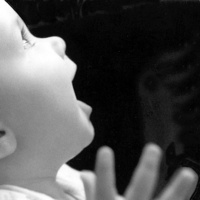Last week I had the pleasure of keynoting the CAPACOA conference in Toronto – a charming bundle of Canadian performing arts presenters, managers, artists, and related professionals. The topic, as assigned, was curiosity. Which led me to wonder a few things: what is curiosity, how does it work, and what might a cultural manager do differently if he or she knew some answers to question one and two?
The Oxford English Dictionary offers two current subjective uses of the word (ignoring for now the objective). One positive: “The desire or inclination to know or learn about anything, esp. what is novel or strange; a feeling of interest leading one to inquire about anything.” One decidedly sinister: “The disposition to inquire too minutely into anything; undue or inquisitive desire to know or learn.”
So, curiosity can drive us to learn more about our world and its inhabitants, sometimes things it’s not our business to know. We all want our audiences and communities to be more curious, particularly about our work and the things we care about. But we don’t want the fickle and salacious curiosity that would draw them quickly elsewhere.
For our conversation, I adopted and adapted a definition from behavioral psychology (specifically from Carnegie Mellon’s George Loewenstein):
Curiosity is the hunger that arises when attention becomes focused on a gap in what you know.
The frame offers several useful insights:
- That curiosity is deeply related to what you know. And several studies suggest that more you know about a domain, the more curious you are about the elements you don’t know.
- That attention is also an essential part of the puzzle. We all have lots of gaps in our knowledge, but become curious when our attention is focused on a particular gap.
- That hunger is one of many possible responses to our attention to the gap, others being aversion, fear, or apathy.
- That our perception of the gap is essential to that emotional response — how big we think it is, what capacity we identify in ourselves or our environment to bridge it, and what pleasure we expect if we get to the other side.
There were many discoveries and discussions with the CAPACOA group that I’m still working to unfold. But I did offer six strategies to nurture curiosity within ourselves, our co-workers, and our communities:
- The Question
The easiest way to pull focus toward a gap in what we know is to ask a question. If we consider the other aspects of curiosity above, we’d be thoughtful to ask a well-framed question that invites rather than intimidates, and that encourages people to believe the answer is within reach. - The Sequence or Story
Our brains are pattern-seeking machines, which makes an unfolding sequence of events particularly compelling. Obviously, art in many forms is driven by story, so our job becomes finding the best way in. - The Surprise or Disconfirmation
Violated expectations turn out to be a powerful way to draw attention and trigger curiosity…when our pattern-guessing brains discover they’re mistaken. Artistic work is often more complex or conflicting than it seems, which can be a benefit to nurturing curiousity. And in our organizations, the habit of seeking disconfirming information can keep us from becoming static and tradition bound. - The Others
Research suggests that we can be motivated toward curiosity when we know that other people know something we don’t know. Of course, you want to be kind and careful when invoking this lure. But it’s a powerful one. - The Unfinished…
As pattern-seekers, we are also often pattern MAKERS…striving to see the whole when shown only the parts. Leaving our work and our messages slightly unfinished can compel people to complete the picture themselves. - The Informed or Reframed Domain
Since we’re more likely to be curious within a domain we know, entirely new or foreign domains can leave us cold or cautious about leaning in. If we’re seeking to engage people who do not know our work, we can either help them know it, or we can reframe the work in a way that they recognize as larger and more familiar. Instead of framing our domain as ‘contemporary dance,’ or ‘theater,’ or ‘visual art,’ or ‘world music,’ we can talk about ‘everyday beauty,’ ‘loss,’ ‘joy,’ ‘movement through space,’ ‘discipline,’ ‘tradition,’ or the like. A productive place to start might be one of the seven psychological functions of art.
In short, all of these techniques or tactics to nurture curiosity require us to BE curious in genuine and even compulsive ways. We need to know, and WANT to know, what frames the lives around us, the people we work with, the communities we seek to serve.
So, if you care about curiosity, begin with a question. And find the gap that draws you forward.


